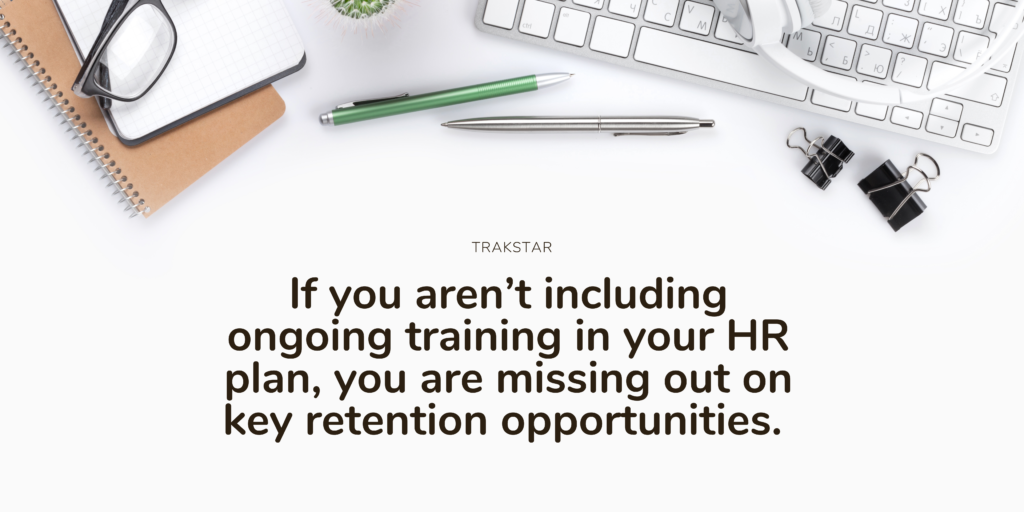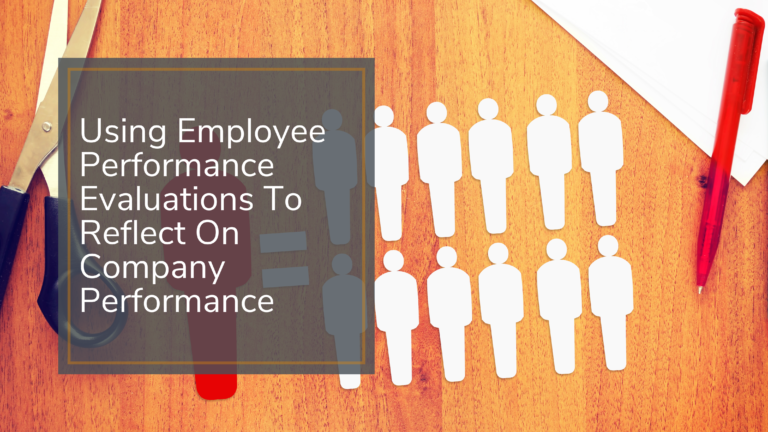Building An HR Plan For 2024
Posted by Noel • January 4, 2022 (Last modified August 15, 2023) • 6 min read
As the time comes for performance reviews, HR leaders are faced with another challenge in the early days of 2024: building an HR plan for their companies. The most successful human resources departments will develop and implement effective plans that focus on multiple areas of their daily duties on the hiring to retiring pipeline.
A strategically written, well thought out HR plan is an essential part of any business plan to help organizations reach their goals. Not only do you need to create goals, but you need to have the scaffolding in place to get there.
If you’ve never developed an HR plan for your company – or you need to start over thanks to this new world we live in – you’re in the right place. Trakstar’s fully-integrated platform for performance management, employee engagement, recruiting, and learning management has changed the way many companies think about human resources and the work they do.
If you are interested in learning more about Trakstar’s Platform, be sure to schedule a free, live demo today. To learn more about building an HR plan, continue reading.
What Is An HR Plan?
An HR plan helps align human resources with the rest of the company in terms of mission, strategies, values, visions, and goals. There is no “one size fits all” way to build a human resources plan. Instead, it takes some introspection about not only HR, but the rest of the company as a whole.
An HR plan will give insights into HR functionality and ensure that everything HR does, from hiring to training, firing to creating succession plans, is consistent. The best HR plan will outline what the department will do to get the company from where they are today to where they want to be at the end of the quarter, month, sprint, year or however else you measure timelines. Often, this aligns with corporate or overall organizational goals and KPIs.
Human resources leaders, with the help of day-to-day managers, are the ones writing the goals for their employees, so they should be well-versed in what the overall goals of the company are and have ideas about how to get there. The most comprehensive HR plans will include:
- Tactics for hiring new employees
- Techniques to onboard new hires
- Ways to cut down on employee turnover
- Ideas for incentivization of existing employees
This is just the tip of the iceberg when it comes to what needs to be in a plan. The more comprehensive and detailed the plan is, the better the chances are for success.
Start By Identifying Needs
First, start by thinking about what happened in HR within the last year. Audit where your time, budget, and intent went over the course of the year. Get as detailed as possible. Think about churn rates, onboarding practices, training initiatives, retention rates, and anything else that was spearheaded by the HR department.
Make a list of what went wrong and how you’d like to change it. Consider why those things didn’t go the way you wanted them to, and think about what you’d do differently the next time around. Then, think about your successes and what went well. What can you learn from those situations?
When you look at the differences between your successes and your failures, you will be able to identify your needs – and your next steps.
Focus on Retention
When building an HR plan, the human factor is what gets difficult to account for, especially during the Great Resignation. You are most likely going to be spending a lot of time onboarding people and ensuring that the good employees you have stay with your company. For midsize companies, the struggle is even greater to retain top-performing employees. Your plan needs to include specific, actionable goals about retention.
Retention starts with good onboarding, but it doesn’t end there.
One of the best ways you can do that is through training and educating your employees. Employees who are learning new things and encouraged to grow are more likely to stay with a company than those who receive no ongoing training. According to the Society for Human Resource Management (SHRM), 69% of employees are more likely to stay with a company for 3 years if they experienced great onboarding and continued training throughout their tenure with the company.
Simply put: if you aren’t including ongoing training in your HR plan, you are missing out on key retention opportunities.
Training your employees doesn’t have to be difficult! Trakstar Learn can help you train (and onboard) your employees from anywhere on any device using multimedia content, auto-enrollment, and quizzes. Even better, we provide detailed reports that you can take to leaders to show what your team is learning, how well they are doing, and more. To schedule a live demo of Trakstar Learn, click here.
Talk To People
Another great step to building an HR plan is to talk to the people who will make it happen.
First, talk to senior leaders about what their expectations are so that you can lay the groundwork within your HR plans. If there are long term changes or significant adjustments you will have to make in six months, what can you do now to prepare for that? Talk to leaders about how and where they want to grow.
Next, you want to talk to your department heads. These are the people who will do a majority of the work to help you achieve your goals. Their success is your success, so you have to know what really matters to them and makes their days easier. Managers and leads also have a better idea of who might be leaving the company, so it is important to pick their brains for potential hiring needs as well.
This doesn’t have to be an endeavor that takes a lot of time! You can build engagement surveys to help gauge the pulse of the people that matter to your planning. Taking the time to build these surveys will allow you to ask important questions and get feedback quickly. It will also help you identify who is providing the feedback so that you can target your initiatives in your plan.
Build An HR Plan For A Remote Environment
One final thing to think about is that we are still living in a remote environment, and it doesn’t look like it will change. Remote employees face specific challenges in engagement, camaraderie, and upskilling.
For more information about managing performance and keeping your employees engaged in a remote or hybrid environment, you can download our free webinar here.
Building An HR Plan Depends On Your Time – Maximize It
There is one thing we all forget to work into our HR plans for the new year: our time. At Trakstar, we’ve talked to HR leaders from all over the world and we know that your most precious resource is your time – you can’t do it all. We strive to meet the needs of HR leaders and managers through our full Trakstar Platform, including Hire, Learn, and Perform – with Insights coming soon!
Trakstar goes above and beyond just making things easier, it allows you to see the hire to retire pipeline in a completely different way – and that is something many of us need to do in 2024 and beyond.
Don't Miss Out on More Great HR Articles!
Subscribe to get the latest, greatest HR and Talent Development content straight to your inbox.



